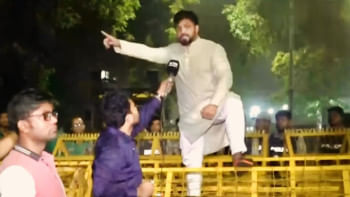What led to J&K decision by India’s SC?

India's Supreme Court yesterday upheld a 2019 decision by Prime Minister Narendra Modi's government to revoke special status for Jammu and Kashmir (J&K) and split the region into two federally administered territories. Here are some facts about J&K and the constitutional change.
WHAT HAPPENED AT PARTITION?
After partition of the subcontinent in 1947, Kashmir was expected to go to Pakistan, as other Muslim-majority regions did. Its Hindu ruler wanted to stay independent, but faced with an invasion by Muslim tribesmen from Pakistan, he acceded to India in October 1947 in return for help against the invaders.
WHAT WAS CONSTITUTIONAL POSITION?
Article 370 of the Indian constitution, which provided autonomy for Jammu and Kashmir, was drafted in 1947 by Sheikh Abdullah, then the state's prime minister, and accepted by India's first prime minister Jawaharlal Nehru. Classified only as a temporary provision, it was included in the Indian constitution in October 1949.
HOW DID THE PICTURE CHANGE IN 1954?
A further provision added to the constitution in 1954 as part of Article 370, article 35A empowered state lawmakers to ensure special rights and privileges for permanent residents of the state.
But it was scrapped with the repeal of Article 370, allowing non-Kashmiris to buy property in the region and ending local control over state government jobs and admission to colleges.
NEIGHBOURS GO TO WAR OVER THE REGION
The dispute over the former princely state sparked the first two of three wars between India and Pakistan after independence in 1947. They fought a second in 1965, and a third, largely over what become Bangladesh, in 1971.
HOW IS THE REGION DIVIDED UP?
For decades, the armies of India and Pakistan have faced off over the Line of Control (LoC), a UN-monitored ceasefire line agreed in 1972, that divides the areas each administers. The foes fought a 1999 battle along the LoC that some analysts described as an undeclared war. Their forces exchanged regular gunfire over the LoC until a truce in late 2003, which has largely held since.
WHY WAS THERE AN INSURGENCY?
Resentment by many Muslims in Indian Kashmir over what they saw as heavy-handed rule by New Delhi sparked an insurgency by separatists in 1989, with some backing Pakistan, while others sought independence for Kashmir. India responded by pouring in troops, and accused Pakistan of backing the separatists.
PICTURE IN J&K CHANGED SINCE 2019
Since 2019, India has announced more investments for the region in areas such as industries, healthcare, education and tourism. It recently listed J&K new-found lithium reserves for private mining. Tourism has grown since 2019 and separatist violence has fallen, the government says.
WHAT AREAS DOES PAKISTAN HOLD?
These consist of the smaller Azad, or "Free", Kashmir and the Northern Areas that formed part of the state before independence. Pakistan backs a UN-mandated referendum to settle the dispute over the region, expecting that the majority of Kashmiris would opt to join Pakistan.
WHAT IS REGION'S GEOGRAPHIC APPEAL?
The Himalayan region has two capitals, Jammu in winter, and Srinagar in summer. Indian Kashmir sprawls over 42,241 sq km. Before the region was split, its size of 222,236 sq km was slightly bigger than the US state of Utah and almost as big as Britain. The western Himalayan region is bounded by Pakistan to the west, Afghanistan to the northwest, China to the northeast, and India to the south.

 For all latest news, follow The Daily Star's Google News channel.
For all latest news, follow The Daily Star's Google News channel. 



Comments